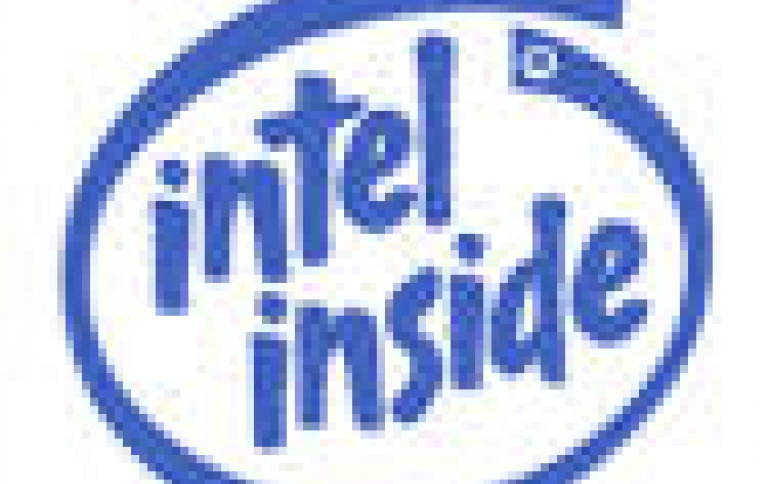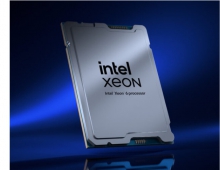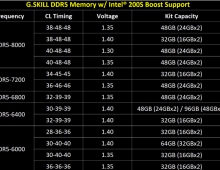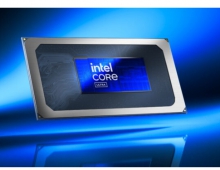
Intel says new mobile chip equals high-end Pentium 4 in performance
Notebook PCs based on the most powerful version of Intel's Centrino mobile technology now perform just as well as
desktop PCs with Intel's fastest Pentium 4 processors, according to an Intel executive.
During this week's launch of the Sonoma Centrino technology, Mooly Eden, vice president and director of marketing of
Intel's new Mobility Group, demonstrated a video game on a new Sonoma laptop and compared its performance to that of
the same video game running on a Pentium 4 desktop PC. The Sonoma design contains the Pentium M processor, the
new Alviso chip set with support for the PCI Express interconnect technology and DDR2 (Double Data Rate 2) memory,
and an Intel Pro/Wireless chip. Intel brands the package as Centrino mobile technology.
In the demonstration, the performance of a Sonoma system with a 2.13-GHz Pentium M processor, 1GB of memory, and the Alviso chip set was said to be comparable to that of a desktop system carrying a 3.6-GHz Pentium 4 processor with hyperthreading, 1GB of memory, and the Grantsdale chip set (which also supports PCI Express and DDR2). Intel had previously compared the high end of its notebook technology to the midrange of its desktop technology.
This is an important milestone for Intel as it plans to eventually make the Pentium M processor the backbone of its chip designs, according to sources. Intel has not publicly confirmed such plans.
Pentium 4 on the Fade?
Intel's Pentium 4 processor has been the company's flagship product since 2000. However, its useful life is coming to an end as faster clock speeds and smaller transistors have combined to make the chip extremely hot due to its inefficient power consumption. Intel has been forced to devote more and more engineering resources to generate the small bumps in the Pentium 4's clock speed that the company once took for granted, and recently it decided to cap the chip's clock speed at 3.8 GHz.
Given that the Pentium 4 was designed primarily to run at high clock speeds, Intel is investigating other methods of improving its performance. The company has already begun shipping to its PC customers new Pentium 4 processors that have twice as much cache memory as older Pentium 4 processors. Increasing the cache memory within a processor allows the chip to store larger amounts of frequently used instructions in a repository that can be accessed much more quickly than the main memory, improving performance without a corresponding increase in power consumption.
Later this year, Intel will also start to roll out dual-core processors. These chips will have two separate processors within a single package, allowing Intel to reduce the clock speeds of those processor cores in order to save power and reduce heat while increasing overall performance.
However, a long-term change is clearly needed to prevent Intel from hitting a "power wall," as Eden put it in an interview prior to the Sonoma launch. The Pentium M was designed to consume as little power as possible from the start of the project, extending battery life and reducing the size of the heat shields needed to protect the notebook from more power-hungry processors.
Mobile Tech Rules
The fact that Intel now has a mobile technology that happens to equal its most powerful desktop technology is a strong argument for using the mobile technology in products other than notebooks, such as entertainment PCs or small-size desktops.
Pentium 4 systems require cooling fans that can be very annoying to users, especially if the PCs are used to watch movies or television. Pentium M-based systems would not require as powerful a cooling fan as the Pentium 4 systems, leading to a quieter experience, says Kevin Krewell, editor in chief of Microprocessor Report in San Jose, California.
Pentium M-based home entertainment systems will probably start to appear after Intel launches Yonah, the dual-core version of the Pentium M, in 2006, Krewell says. Users will not accept the new platforms unless they offer the same performance people have become accustomed to with Pentium 4-based systems, and Yonah's performance combined with its cool running temperature will make for an attractive product, he says.
In the demonstration, the performance of a Sonoma system with a 2.13-GHz Pentium M processor, 1GB of memory, and the Alviso chip set was said to be comparable to that of a desktop system carrying a 3.6-GHz Pentium 4 processor with hyperthreading, 1GB of memory, and the Grantsdale chip set (which also supports PCI Express and DDR2). Intel had previously compared the high end of its notebook technology to the midrange of its desktop technology.
This is an important milestone for Intel as it plans to eventually make the Pentium M processor the backbone of its chip designs, according to sources. Intel has not publicly confirmed such plans.
Pentium 4 on the Fade?
Intel's Pentium 4 processor has been the company's flagship product since 2000. However, its useful life is coming to an end as faster clock speeds and smaller transistors have combined to make the chip extremely hot due to its inefficient power consumption. Intel has been forced to devote more and more engineering resources to generate the small bumps in the Pentium 4's clock speed that the company once took for granted, and recently it decided to cap the chip's clock speed at 3.8 GHz.
Given that the Pentium 4 was designed primarily to run at high clock speeds, Intel is investigating other methods of improving its performance. The company has already begun shipping to its PC customers new Pentium 4 processors that have twice as much cache memory as older Pentium 4 processors. Increasing the cache memory within a processor allows the chip to store larger amounts of frequently used instructions in a repository that can be accessed much more quickly than the main memory, improving performance without a corresponding increase in power consumption.
Later this year, Intel will also start to roll out dual-core processors. These chips will have two separate processors within a single package, allowing Intel to reduce the clock speeds of those processor cores in order to save power and reduce heat while increasing overall performance.
However, a long-term change is clearly needed to prevent Intel from hitting a "power wall," as Eden put it in an interview prior to the Sonoma launch. The Pentium M was designed to consume as little power as possible from the start of the project, extending battery life and reducing the size of the heat shields needed to protect the notebook from more power-hungry processors.
Mobile Tech Rules
The fact that Intel now has a mobile technology that happens to equal its most powerful desktop technology is a strong argument for using the mobile technology in products other than notebooks, such as entertainment PCs or small-size desktops.
Pentium 4 systems require cooling fans that can be very annoying to users, especially if the PCs are used to watch movies or television. Pentium M-based systems would not require as powerful a cooling fan as the Pentium 4 systems, leading to a quieter experience, says Kevin Krewell, editor in chief of Microprocessor Report in San Jose, California.
Pentium M-based home entertainment systems will probably start to appear after Intel launches Yonah, the dual-core version of the Pentium M, in 2006, Krewell says. Users will not accept the new platforms unless they offer the same performance people have become accustomed to with Pentium 4-based systems, and Yonah's performance combined with its cool running temperature will make for an attractive product, he says.





















